The corn snake, a captivating reptile renowned for its striking patterns and docile temperament, occupies a special place in both the natural world and human fascination. This guide delves into the life of the corn snake, exploring its biology, behavior, habitat, and relationship with both the ecosystem and people. From its evolutionary origins to its role as a popular pet, this comprehensive overview aims to illuminate all facets of this remarkable species.
Understanding the Corn Snake
The corn snake, scientifically known as Pantherophis guttatus, is a nonvenomous species belonging to the family Colubridae. Native to the southeastern and central United States, these snakes are highly adaptable and can be found in a variety of habitats. They derive their name from the historical association with corn granaries, where they were often found preying on rodents attracted to the stored grain.
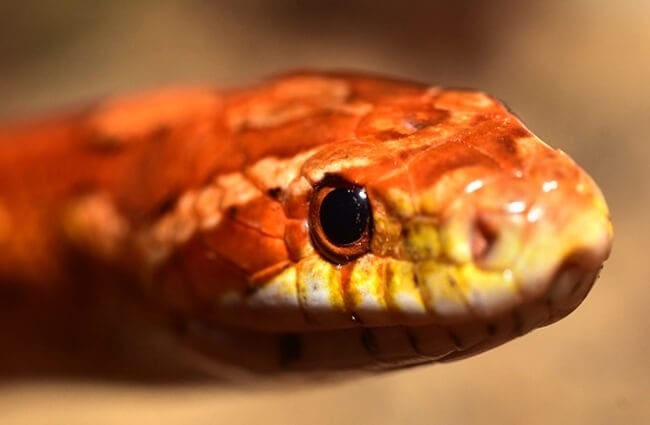
Physical Characteristics
Corn snakes are relatively slender, typically reaching lengths of 2 to 3 feet, although some individuals can grow up to five feet. Their coloration varies widely depending on geographic location and individual morph. The most common pattern features reddish-orange blotches on a yellowish or white background, resembling corn kernels, hence the name. Color variations include snow white, charcoal, amber, and combinations thereof. This variation is particularly pronounced in captive-bred individuals, where selective breeding has produced an impressive array of colors and patterns.
They possess smooth dorsal scales, giving them a sleek texture that aids in movement through leaf litter and underbrush. Like all snakes, they lack external ears and detect vibrations to perceive movement and changes in their surroundings. Their forked tongue collects scent particles, which are analyzed by the Jacobson’s organ, allowing them to “taste” the air.
Habitat and Distribution
Corn snakes inhabit a diverse range of habitats, including woodlands, forest edges, overgrown fields, and abandoned buildings. They are commonly found near agricultural lands, which explains their historical association with cornfields. Their distribution extends from southeastern Iowa, Illinois, Indiana, Ohio, and Missouri south through Kentucky, Tennessee, Arkansas, Oklahoma, and east to the Carolinas and southern New England. They thrive in areas with ample cover, such as leaf litter, logs, and rocks, providing protection from predators and ideal ambush points for prey.
These snakes are adaptable to a range of elevations, residing anywhere from sea level to elevations above 6,000 feet in the Appalachian Mountains. While they prefer drier environments, they are often found near sources of water, such as streams and ponds, especially during warmer months.
Diet and Hunting Strategies
Corn snakes are opportunistic constrictors, subduing their prey by wrapping around it and squeezing until it suffocates. Their diet primarily consists of rodents, such as mice and voles, but they also consume small birds, lizards, and occasionally eggs. Young corn snakes tend to feed on smaller prey items, such as pinky mice, while adults can handle larger rodents.
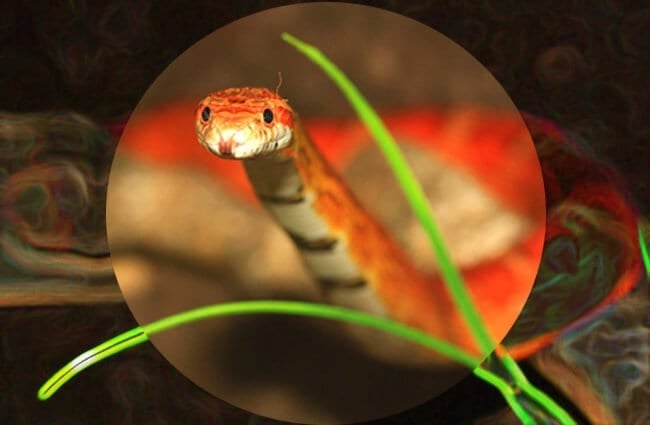
They are ambush predators, patiently waiting for prey to come within striking distance. They rely on their camouflage to blend into the surroundings and on quick reflexes to seize unsuspecting animals. Once captured, the snake coils around its prey, constricting with increasing force until breathing ceases. The snake then swallows the prey whole, often starting with the head.
Reproduction and Life Cycle
Corn snakes are oviparous, meaning they reproduce by laying eggs. Breeding season typically occurs in spring, with males engaging in a “combat dance” to establish dominance and attract females. After mating, the female lays a clutch of 3 to 24 eggs in a secluded location, such as under a log, inside a hollow tree, or in a rock crevice. She incubates the eggs for approximately 50 to 60 days, selecting a suitable microhabitat to maintain the required temperature. Once hatched, the young snakes are independent and begin foraging for food immediately. They reach sexual maturity at around 3 to 4 years of age and can live for 15 to 20 years in the wild, and even longer in captivity.
Ecological Role and Interactions
Corn snakes play a crucial role in maintaining the balance of their ecosystem. As predators of rodents, they help control populations, preventing overgrazing and potential damage to agricultural crops. They also serve as a food source for larger predators, such as hawks, owls, and foxes.
Their interactions with other species are generally non‑aggressive. They may occasionally compete with other snakes for food and shelter, but conflicts are rare. They are also preyed upon by larger snakes, such as black racers and rat snakes. In areas where their ranges overlap, they coexist peacefully, sharing resources and contributing to overall biodiversity.
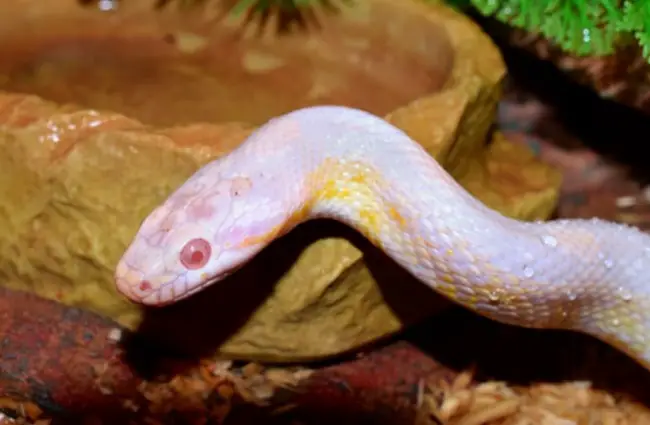
Corn Snakes and Humans
Historically, corn snakes were often considered harmless and were tolerated by farmers due to their rodent‑control benefits. However, they were sometimes killed out of fear or misunderstanding. Today, they are widely appreciated as fascinating creatures and are popular pets because of their docile temperament, manageable size, and striking appearance.
As pets, they require a secure enclosure, appropriate temperature and humidity levels, and a diet of appropriately sized rodents. Responsible ownership involves providing adequate care, enrichment, and veterinary attention. While nonvenomous, a bite from a corn snake can still be painful and should be treated as any other minor wound.
Advanced Insights for Zoologists and Dedicated Enthusiasts
Genetic studies reveal the remarkable diversity within Pantherophis guttatus, with numerous morphs arising from relatively recent mutations. Understanding the genetic basis of these color and pattern variations is an ongoing area of research. Population genetics studies are also crucial for conservation efforts, especially in regions where habitat loss and fragmentation are prevalent.
Their thermoregulatory behavior is particularly interesting. They use basking sites to raise their body temperature and seek shade or burrow underground to cool down. This behavior is influenced by factors such as ambient temperature, humidity, and the snake’s physiological state. Studying their thermal ecology provides valuable insights into their energy budgets and habitat requirements.
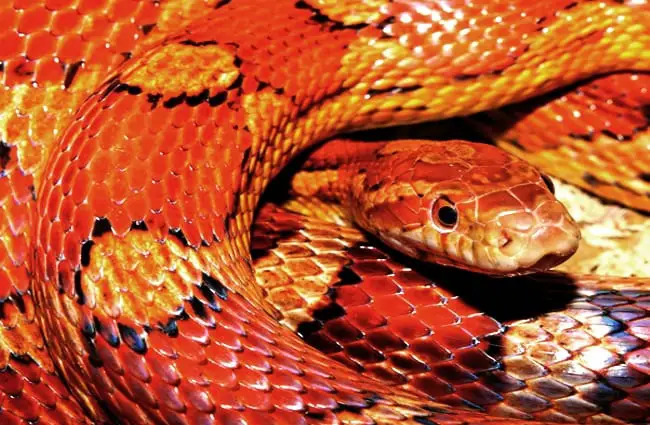
Encountering a Corn Snake in the Wild
If you encounter a corn snake while hiking or exploring the outdoors, the best course of action is to observe it from a distance. Do not attempt to handle or disturb the snake, as this may cause it to feel threatened and bite. Allow the snake to move on its own accord. Remember that they are harmless and play a vital role in the ecosystem.
Caring for Corn Snakes in Captivity: A Zookeeper’s Guide
Maintaining a healthy corn snake in captivity requires diligent care. Provide a spacious enclosure with a temperature gradient, allowing the snake to regulate its body temperature. A heat source, such as a heat lamp or heater under the tank, is essential. Humidity levels should be monitored and maintained within the appropriate range. Offer a diet of appropriately sized rodents, supplemented with vitamins and minerals. Regular cleaning of the enclosure is crucial for preventing the buildup of bacteria and parasites. Monitor the snake for any signs of illness, such as lethargy, loss of appetite, or abnormal shedding, and consult a veterinarian immediately if any concerns arise.
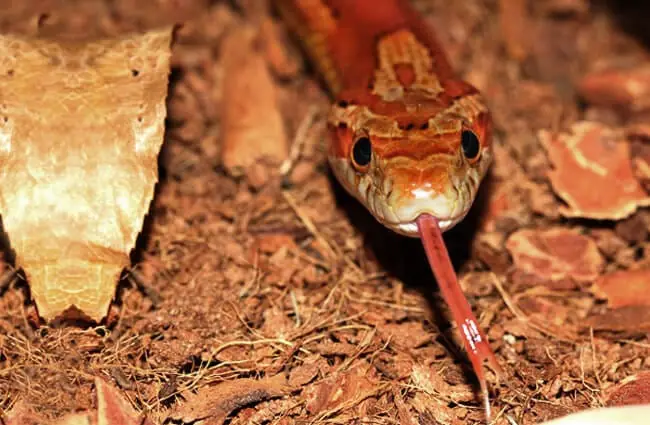
In conclusion, the corn snake is a captivating reptile with a rich natural history and a growing presence in human culture. From its ecological role as a rodent control agent to its popularity as a pet, this remarkable species continues to fascinate and inspire. By understanding its biology, behavior, and conservation needs, we can ensure its continued survival for generations to come.

![Red Angus Closeup of a beautiful Red Angus cowPhoto by: U.S. Department of Agriculture [pubic domain]https://creativecommons.org/licenses/by/2.0/](https://animals.net/wp-content/uploads/2020/03/Red-Angus-4-238x178.jpg)




![Red Angus Closeup of a beautiful Red Angus cowPhoto by: U.S. Department of Agriculture [pubic domain]https://creativecommons.org/licenses/by/2.0/](https://animals.net/wp-content/uploads/2020/03/Red-Angus-4-100x75.jpg)

